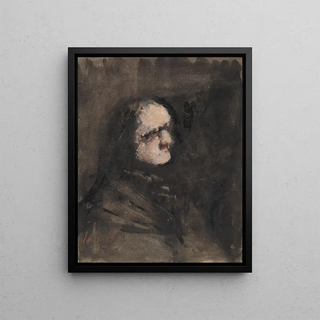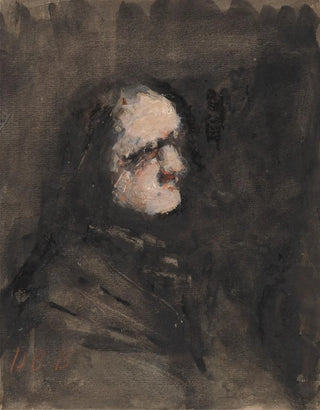Art print | Amouk after Goya - Hercules Brabazon Brabazon


View from behind

Frame (optional)
Goya's Amouk art print - Hercules Brabazon Brabazon – Captivating Introduction
Art, as a mirror of the human condition, often reveals itself through works that transcend their era. The Amouk art print after Goya - Hercules Brabazon Brabazon fits into this tradition, offering a fascinating window into the dialogue between two artists from different periods. Goya, master of Spanish romanticism, knew how to capture human emotions with rare intensity, while Brabazon, through his interpretations, breathes new life into classical themes. This piece, at the crossroads between the old and the modern, invites viewers to reflect on the continuity of art and how it evolves while remaining true to its roots.
Style and uniqueness of the work
The proposed art print is a true ode to the complexity of Goya's style, while reflecting Brabazon's unique sensitivity. The vibrant colors, play of light and shadow, and the emotional depth conveyed by this work demonstrate undeniable technical mastery. Brabazon, inspired by Goya's compositions, manages to create an atmosphere that is both familiar and innovative. The piece stands out through its bold use of contrasts, where dark shades oppose flashes of light, symbolizing the internal struggles of the human soul. Every detail, every brushstroke, seems to tell a story, inviting the viewer to immerse themselves in a universe rich in meaning.
The artist and his influence
Hercules Brabazon Brabazon, although less known than his illustrious predecessor, has made a place for himself in the art world thanks to his ability to reinterpret masterpieces. His approach is marked by a sensitivity to nature and a fascination with human emotions, inherited from Goya. Brabazon is not merely a simple imitator; he is a creator who dialogues with the past while asserting his own voice. His work has influenced many contemporary artists, who see in him a pioneer of modern art, capable of merging tradition and innovation. Through his works, he reminds us that art is a continuum, a space where

Matte finish

View from behind

Frame (optional)
Goya's Amouk art print - Hercules Brabazon Brabazon – Captivating Introduction
Art, as a mirror of the human condition, often reveals itself through works that transcend their era. The Amouk art print after Goya - Hercules Brabazon Brabazon fits into this tradition, offering a fascinating window into the dialogue between two artists from different periods. Goya, master of Spanish romanticism, knew how to capture human emotions with rare intensity, while Brabazon, through his interpretations, breathes new life into classical themes. This piece, at the crossroads between the old and the modern, invites viewers to reflect on the continuity of art and how it evolves while remaining true to its roots.
Style and uniqueness of the work
The proposed art print is a true ode to the complexity of Goya's style, while reflecting Brabazon's unique sensitivity. The vibrant colors, play of light and shadow, and the emotional depth conveyed by this work demonstrate undeniable technical mastery. Brabazon, inspired by Goya's compositions, manages to create an atmosphere that is both familiar and innovative. The piece stands out through its bold use of contrasts, where dark shades oppose flashes of light, symbolizing the internal struggles of the human soul. Every detail, every brushstroke, seems to tell a story, inviting the viewer to immerse themselves in a universe rich in meaning.
The artist and his influence
Hercules Brabazon Brabazon, although less known than his illustrious predecessor, has made a place for himself in the art world thanks to his ability to reinterpret masterpieces. His approach is marked by a sensitivity to nature and a fascination with human emotions, inherited from Goya. Brabazon is not merely a simple imitator; he is a creator who dialogues with the past while asserting his own voice. His work has influenced many contemporary artists, who see in him a pioneer of modern art, capable of merging tradition and innovation. Through his works, he reminds us that art is a continuum, a space where






